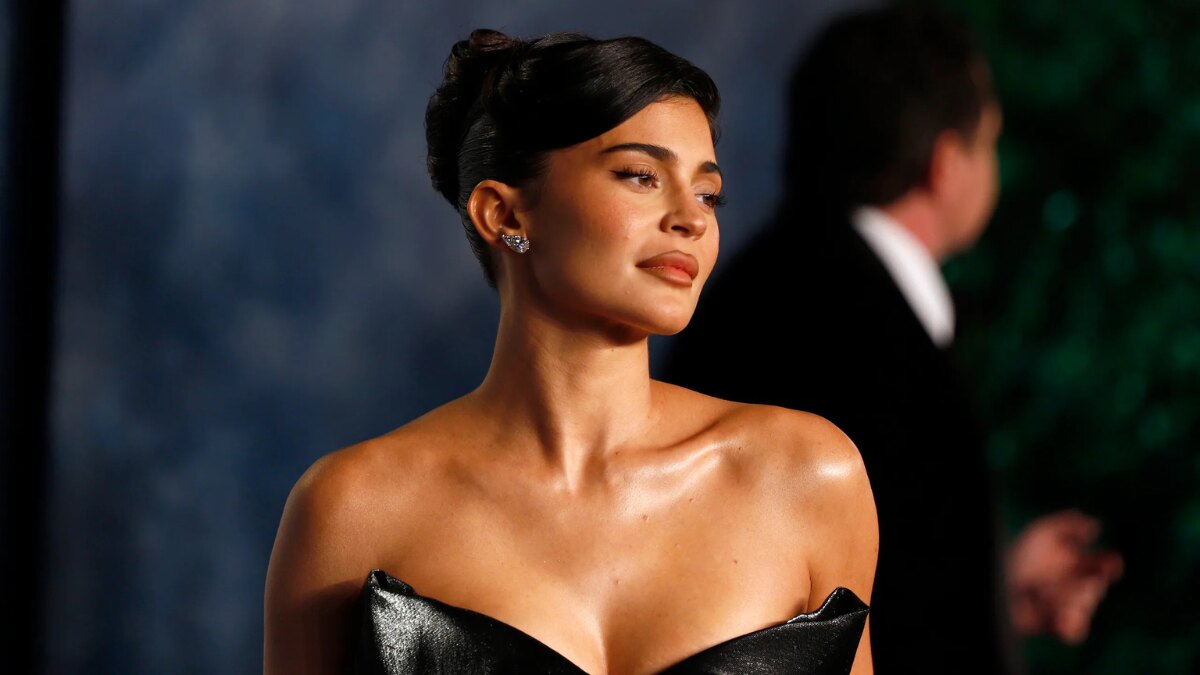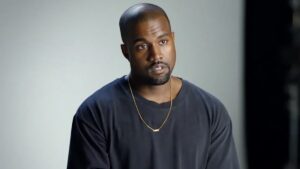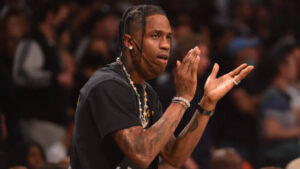Under the flashbulbs of paparazzi cameras, a teenage Kylie Jenner once walked red carpets more as a backdrop to her older sisters than a headline act. Fast-forward less than a decade, and that same young woman is orchestrating product drops that crash websites, moving millions of dollars in lip kits before lunchtime. Her journey from the polished chaos of Keeping Up with the Kardashians to boardroom-level decision-making is more than a tale of fame—it’s a case study in modern brand alchemy.
Kylie’s ascent speaks to the rise of the celebrity entrepreneur in a digital-era brand-building landscape, where a smartphone feed can hold more sway than a prime-time ad slot. In an industry once ruled by heritage labels, her brand represents beauty industry disruption at scale, reshaping how products are launched, marketed, and sold. The question that hooks both admirers and skeptics is simple: How does someone move from reality TV starlet to “self-made” mogul so quickly—and stay there?
This isn’t about retelling the same old timeline. It’s about dissecting the mechanics behind her transformation, the calculated moves that made her more than a name, and the cultural moment she both captured and created. The answers, as we’ll see, are layered, strategic, and deeply tied to the era that made her.
Origins in the Spotlight – The Reality TV Launchpad
Growing Up Kardashian
Kylie Jenner’s childhood unfolded in the glare of a cultural experiment — the early 2000s reality TV boom, where everyday life became entertainment and private moments turned into shareable plotlines. As the youngest in a household that mastered the art of celebrity culture, she absorbed lessons about narrative, image, and timing almost by osmosis. Her playground was a set, her family dinners potential story arcs, and her milestones public record.
This constant media exposure was more than background noise; it was a training ground. Watching Kris Jenner navigate headlines, Kim shape trends, and her siblings cultivate devoted followings gave Kylie a crash course in audience psychology. She learned, even before she could articulate it, that visibility could be engineered and influence could be measured. The family brand influence didn’t just open doors — it taught her how to walk through them with an eye on the lens and a story ready to be told.
Learning the Media Game
For Kylie Jenner, more than ten years on Keeping Up with the Kardashians doubled as an unorthodox MBA in branding. Each season offered a live case study in public perception, and she quickly learned how to pivot a storyline when the narrative didn’t serve her. Early on, she shifted focus from being “the quiet youngest sister” to carving out a distinct identity through beauty experimentation — a move that set the stage for her lip kit empire.
She mastered the rhythm of media cycles, teasing just enough personal detail to keep audiences invested while withholding enough to spark speculation. When scrutiny over her changing appearance threatened to overshadow her, she reframed it as a beauty journey, seamlessly aligning it with the products she’d later sell. This knack for narrative control — cultivated under constant cameras — became a business asset, enabling her to launch and sustain a brand with the same precision she once used to shape a reality TV subplot.
The Leap to Business – Birth of Kylie Cosmetics
Lip Kits and the Power of Scarcity Marketing
When Kylie Jenner dropped her first lip kits in 2015, they sold out in under a minute — not by accident, but by design. The rollout tapped into classic scarcity psychology: limited quantities, unannounced restocks, and a social media countdown that stoked FOMO among fans. Each sell-out wasn’t a failure to meet demand; it was proof of desirability, turning every purchase into a badge of insider status.
The campaign thrived in the golden age of influencer culture, with beauty vloggers and Instagram personalities showcasing swatches within hours of release. These unpaid endorsements amplified the hype, creating a loop where user-generated buzz fueled demand for the next drop. Kylie’s posts — equal parts personal diary and product ad — blurred the line between celebrity and customer, making fans feel they were buying into her lifestyle, not just a lipstick. The result: a product launch that became a cultural event, and a blueprint for viral beauty marketing.
Direct-to-Consumer Disruption
By launching Kylie Cosmetics as a purely direct-to-consumer brand, Kylie Jenner sidestepped the overhead, middlemen, and shelf-space battles of traditional retail. Every transaction happened online, allowing her to keep a larger share of profits and maintain complete control over pricing, packaging, and customer experience. For many startups, this model can be risky — but Kylie had two built-in advantages: an audience of tens of millions and the ability to mobilize them instantly through social media-driven sales.
Her launches felt more like concert tickets than makeup releases, powered by influencer-led ecommerce where her posts acted as the ultimate endorsement. This approach gave her beauty startup agility, enabling rapid product drops, real-time feedback loops, and quick pivots in shades or formulas. While other brands struggled to stand out online, Kylie’s digital-first strategy worked because she didn’t just sell products — she sold them inside a story her followers already felt part of.
Social Media as the New Boardroom
For Kylie Jenner, Instagram and Snapchat weren’t side channels to her business — they were the boardroom, the showroom, and the cash register rolled into one. Every post, from an artfully lit selfie to a behind-the-scenes product tease, was a chapter in an ongoing brand story. Her feed wasn’t random; it was a carefully curated aesthetic that balanced aspiration with accessibility, subtly positioning Kylie Cosmetics as the natural extension of her style.
Her captions — often brief, playful, and conversational — doubled as soft-sell pitches, inviting fans into her world while steering them toward the next launch. Posting cadence was equally strategic: bursts of content around product drops to maximize organic reach, followed by quieter stretches that let anticipation build.
This wasn’t just personal brand monetization; it was a masterclass in turning a digital storefront into a cultural touchpoint. Followers weren’t just scrolling past ads — they were witnessing a lifestyle they could participate in with a single click.
The question lingers: Can social media alone build a billion-dollar brand? In Kylie’s case, yes — but not because of the platforms alone. It worked because she understood how to merge content and commerce so seamlessly that buying a lip kit felt less like a transaction and more like joining a movement. That fusion of personality, timing, and direct engagement became the true foundation of her empire.
Owning the Narrative – Handling Controversy and Criticism
When Forbes crowned Kylie Jenner the youngest “self-made” billionaire in 2019, the praise was immediate — and so was the backlash. Critics questioned the label, while later valuation disputes sparked headlines that could have damaged her credibility. Yet Kylie’s response showed a textbook case in celebrity brand resilience.
She avoided public sparring, opting instead for selective silence that let the frenzy pass while she stayed on message. When she did speak, it was through brand-safe interviews and controlled social media posts that refocused attention on product launches, collaborations, and charitable initiatives. This was calculated public perception management: acknowledge just enough to seem engaged, but not enough to extend the controversy’s life cycle.
Her media strategy hinged on understanding that not every fire needs to be fought head-on — some burn out faster when starved of oxygen. By choosing her moments and platforms carefully, Kylie maintained authority over her narrative, proving that in the age of instant outrage, control often comes from what you don’t say as much as what you do.
How Kylie Compares to Rihanna, Kim Kardashian, and Selena Gomez
Market Niche Positioning
Kylie Cosmetics built its name on a luxury-meets-aspirational image — sleek packaging, trend-driven products, and the allure of owning a piece of Kylie’s lifestyle. This approach appeals to fans seeking glamour and exclusivity at a reachable price point, creating loyalty through the promise of transformation.
By contrast, Fenty Beauty leads with inclusivity, launching an unprecedented foundation shade range that redefined industry standards. Its audience loyalty stems from representation — customers feel seen and valued beyond the purchase. Rare Beauty, meanwhile, centers on mental health advocacy and authenticity, fostering an emotionally engaged community that connects as much with the mission as with the makeup.
These distinct brand narratives shape loyalty differently: Kylie’s through aspirational identity, Fenty’s through social impact, and Rare’s through shared values — each cultivating a tribe whose devotion extends well past the product itself.
Ownership Models
Kylie Jenner famously sold 51% of Kylie Cosmetics to Coty in 2019, trading some long-term brand control for a lucrative payout and access to global distribution infrastructure. This partial exit reduced her equity stake but positioned the brand for broader retail reach.
Rihanna’s Fenty Beauty, operated under a 50-50 joint venture with LVMH’s Kendo, maintains shared decision-making while leveraging luxury group resources. Selena Gomez’s Rare Beauty remains privately held, preserving full creative control but relying on organic growth and selective retail partnerships.
These ownership structures directly influence valuation stability and expansion potential. Majority or full ownership allows for agile pivots but can slow scaling; partial stakes with corporate partners accelerate growth but dilute autonomy. Kylie’s model prioritized rapid international expansion, while her peers’ choices reflect a balance between maintaining vision and accessing market power.
Valuation Stability
In beauty, valuation stability often hinges on balancing hype with sustainable sales. Brands with strong corporate backing, like Fenty Beauty’s partnership with LVMH, tend to maintain steadier valuations because they have deep operational support, global supply chains, and diversified retail channels.
Kylie Cosmetics’ early valuation soared on viral demand, but reliance on limited drops and a concentrated product range made it more sensitive to market shifts. The Coty deal brought infrastructure that could stabilize growth, though it also tied the brand’s fortunes to a larger corporate strategy.
Rare Beauty’s slower, mission-driven expansion may not hit headline-grabbing numbers as quickly, but its consistent product line and loyal community create a dependable revenue base. In short, steady valuations usually come from brands that combine cultural relevance with operational depth — not just short-term buzz.
Beyond Makeup – Expansion and Diversification
Kylie Jenner hasn’t limited her empire to lip kits and eyeshadow palettes. With the launch of Kylie Skin in 2019, she expanded into cleansers, moisturizers, and serums — signaling a deliberate brand extension into the broader beauty and wellness space. The move wasn’t reckless diversification; it was calculated. Skincare shared the same audience base as cosmetics, allowing her to test products with a built-in market before committing to full-scale production.
She’s also leaned into collaborations — both within the Kardashian-Jenner family and with global retailers — to introduce new categories without bearing the full weight of development costs. These partnerships act as low-risk pilots, offering insights into consumer demand before she scales.
Hints at future lifestyle product expansion have surfaced in trademark filings for baby products, fragrances, and home goods. While some of these may never hit shelves, they reflect a readiness to move beyond beauty into cross-category marketing. Each potential pivot is underpinned by the same formula: leverage her brand equity, align with high-demand consumer trends, and keep investment nimble until the concept proves itself.

By treating expansion like a series of market experiments, Kylie minimizes risk while positioning herself for long-term relevance — a strategy that mirrors the adaptability of major legacy brands, but with the speed and cultural currency of a digital-native entrepreneur.
My Close-Up View of the Kylie Effect
I remember standing backstage at a Los Angeles beauty summit, the air thick with the scent of rosewater mists and freshly opened lipsticks. Influencers in glittering outfits clustered near ring lights, each perfecting their next post. Then the room shifted — not louder, exactly, but sharper, as every phone tilted toward the entrance. Kylie Jenner had arrived.
She moved with the practiced ease of someone who knows exactly how much space her presence occupies. Her team formed a quiet orbit around her, managing schedules and greetings without breaking the flow. A makeup artist whispered about the lipstick she was wearing — “It’s dropping next month” — and within seconds, three attendees were already refreshing the Kylie Cosmetics site, just in case.
What struck me wasn’t just the frenzy; it was the precision. Every handshake, every photo, every casual laugh seemed calibrated yet effortless. Watching her navigate that space, I realized her influence wasn’t just about followers or sales. It was about command — the ability to turn any room into a live advertisement without it feeling like one. That’s the Kylie Effect: a blend of charisma, control, and cultural pull that most brands spend decades — and millions — trying to manufacture.
The Future of Kylie’s Brand in an AI and AR Beauty Era
The next frontier for Kylie Jenner’s empire may be written not in lipstick shades, but in code. With AI personalization becoming a beauty industry standard, Kylie could offer customers tailored product recommendations based on skin tone, makeup style, and purchase history — think of it as a digital beauty advisor with her brand’s voice.
Augmented reality cosmetics are another logical step. Similar to Sephora’s Virtual Artist, Kylie’s app could let users “try on” lip colors, highlighters, or eye palettes in real time, turning every smartphone into a personalized makeup mirror. For a brand built on visual storytelling, AR try-ons could merge seamlessly with her Instagram-driven aesthetic.
Even virtual beauty retail — immersive pop-up stores in the metaverse — feels like a natural extension. With L’Oréal investing heavily in AI and AR, and Coty (her partner) experimenting in digital commerce, Kylie has the infrastructure to move early.
The question is whether she’ll lead or follow. Given her track record of turning cultural moments into product gold, betting on her to be among the first celebrity brands to mainstream beauty tech seems safe. For Kylie, the future may not just be online — it could be virtually in your hands before you ever open your makeup bag.
The Blueprint for Building a Modern Celebrity Empire
Kylie Jenner’s rise offers a clear blueprint for building a modern celebrity empire. First, she mastered audience-first marketing, cultivating a community long before selling a product. By speaking directly to her followers, she built demand organically, making each launch feel like an event rather than a transaction.
Second, she understood the power of ownership leverage — holding enough equity to maintain influence while strategically partnering with corporate giants to scale globally. This balance between control and collaboration amplified both reach and resources.
Third, her calculated expansion kept risk low. Each move into skincare, collaborations, or potential lifestyle lines was tested with minimal investment, informed by real-time feedback from her audience.
Finally, her instinct for cultural timing ensured her brand wasn’t just present in the market but central to the conversation, from capitalizing on influencer culture to navigating beauty tech’s next wave.
For aspiring entrepreneurs, Kylie’s story is proof that in today’s digital marketplace, fame alone isn’t enough — it’s the ability to merge personality, strategy, and timing that builds longevity. In an age where a post can launch a product, she’s shown that the smartest brands don’t just ride trends; they define them.
Nishant Wagh is the founder of The Graval and a seasoned SEO and content strategist with over 15 years of experience. He writes with a focus on digital influence, authority, and long-term search visibility.





6 thoughts on “The Legacy of Kylie Jenner: From Reality TV Teen to Self-Made Mogul”